Related Research Articles

Dwight David "Ike" EisenhowerGCS CCLH KC was an American politician and soldier who served as the 34th president of the United States from 1953 to 1961. During World War II, he became a five-star general in the Army and served as Supreme Commander of the Allied Expeditionary Force in Europe. He was responsible for planning and supervising the invasion of North Africa in Operation Torch in 1942–43 and the successful invasion of Normandy in 1944–45 from the Western Front.

Harold Edward Stassen was an American politician who was the 25th Governor of Minnesota. He was a leading candidate for the Republican nomination for President of the United States in 1948, considered for a time to be the front-runner. He thereafter regularly continued to run for that and other offices, such that his name became most identified with his status as a perennial candidate.

Arthur William Radford was a United States Navy admiral and naval aviator. In over 40 years of military service, Radford held a variety of positions including Vice Chief of Naval Operations, commander of the United States Pacific Fleet and later the second Chairman of the Joint Chiefs of Staff.

Edward Latimer Beach Jr., nicknamed "Ned", was a highly decorated United States Navy submarine officer and best-selling author.

The Presidential Service Badge (PSB) is an identification badge of the United States Armed Forces which is awarded to members of the U.S. Army, U.S. Navy, U.S. Air Force, U.S. Marine Corps, and U.S. Coast Guard as well as other members of the Uniformed Services, such as the U.S. National Oceanic and Atmospheric Administration Commissioned Corps and the U.S. Public Health Service Commissioned Corps, who serve as full-time military staff to the President of the United States.

George Whelan Anderson Jr. was an admiral in the United States Navy and a diplomat. Serving as the Chief of Naval Operations between 1961 and 1963, he was in charge of the US blockade of Cuba during the 1962 Cuban Missile Crisis.

John Sheldon Doud Eisenhower was a United States Army officer, diplomat, and military historian. He was a son of President Dwight D. Eisenhower and First Lady Mamie Eisenhower. His military career spanned from before, during, and after his father's presidency, and he left active duty in 1963 and then retired in 1974. From 1969 to 1971, Eisenhower served as United States Ambassador to Belgium during the administration of President Richard Nixon, who was previously his father's vice president and also his daughter-in-law's father.
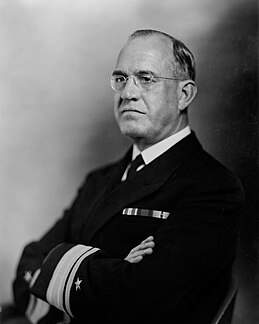
James Otto Richardson was an admiral in the United States Navy who served from 1902 to 1947. As Commander in Chief, United States Fleet (CinCUS), he protested the redeployment of the Pacific portion of the fleet forward to Pearl Harbor since he believed that a forward defense was neither practical nor useful and that the Pacific Fleet would be the logical first target in the event of war with Japan since it was vulnerable to air and torpedo attacks. He was relieved of command in February 1941. His concerns proved justified during the Japanese attack on Pearl Harbor only ten months later.

Vice Admiral Scott Allen Fry, is a former Director of the Joint Staff for the United States Department of Defense, who previously served as commander of the Sixth Fleet.

Bernard Ambrose Clarey, nicknamed "Chick", was an admiral of the United States Navy. A submarine commander during World War II, he served during the late 1960s as Vice Chief of Naval Operations and in the early 1970s as Commander in Chief, U.S. Pacific Fleet.
William Woodward Outerbridge was a Rear Admiral in the United States Navy. He held the distinction of firing the first shots in defense of the United States during World War II.
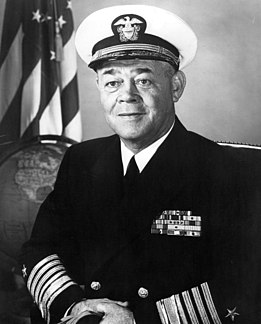
Admiral Herbert Gladstone Hopwood was a four-star admiral in the United States Navy who served as commander in chief of the United States Pacific Fleet from 1958 to 1960.

Major General Roscoe Barnett Woodruff was a career United States Army officer who fought in both World War I and World War II and served for 38 years. During World War II he commanded numerous divisions and corps in Europe and the Pacific.
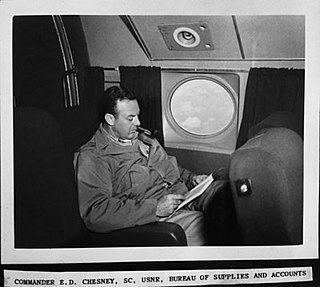
Earle D. Chesney served with the Veterans Administration before joining the Eisenhower White House staff on March 4, 1954. Prior to his service with the VA, he served as Assistant Usher in the Hoover White House. During World War II and the Korean War he served with the Navy, reaching the rank of Captain. During his naval service he became rather famous as the cartoonist who invented the naval character, “Eggburt of the Navy,” who, like the Army's “Sad Sack,” entertained service men and women around the world.
Augustus Dayton Clark, a 1922 graduate of the United States Naval Academy and a United States Naval captain, was Commanding Officer of Force Mulberry A at Omaha Beach during the Invasion of Normandy on June 6, 1944.
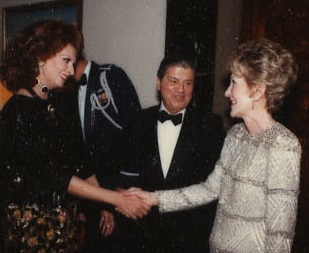
Maxwell Milton Rabb was a lawyer who served in various positions as an advisor to U.S. President Dwight D. Eisenhower, and later as Ambassador to Italy under President Ronald Reagan.
Charles Fountain Willis, Jr. was born in Beaumont, Texas, and earned a B.A. from the University of Florida in 1939.
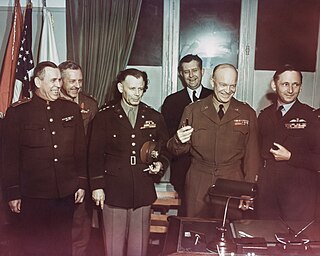
Harry Cecil Butcher was an American radio broadcaster who served during World War II as the Naval Aide to General Dwight D. Eisenhower from 1942 to 1945.
James Hopkins Smith Jr. was United States Assistant Secretary of the Navy (AIR) from 1953 to 1956 and then was head of the United States Agency for International Development from 1957 to 1959.

Adolphus Andrews was a decorated officer in the United States Navy with the rank of Vice Admiral. A Naval Academy graduate and veteran of three wars, he is most noted for his service as Commander, Eastern Sea Frontier during the World War II.